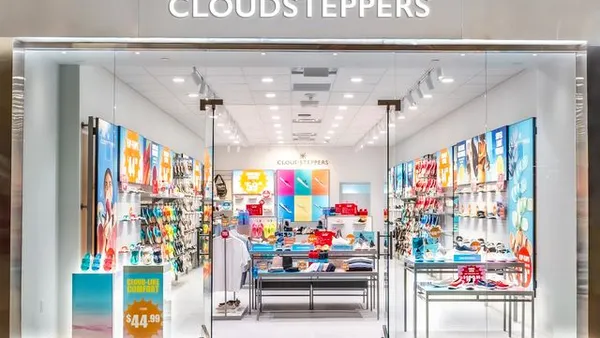Dive Brief:
-
Macy's has launched virtual reality furniture shopping experiences in about 70 of its stores nationwide, with plans to expand the capabilities to 20 more stores by January 2019, according to a Macy's press release that claimed the offering is the largest in-store VR rollout in retail history.
-
The retailer is working with Marxent, a technology company whose 3D Cloud service is a content management and hosting platform for VR and augmented reality applications. The system in place at Macy's stores allows shoppers to design a living space with 3D furniture images, and use VR headsets to move through the space virtually to see if they like it before purchasing anything.
-
The news comes after Macy's and Marxent ran pilot VR programs in three stores, and found that "VR-influenced furniture sales have increased by more than 60 percent versus non-VR furniture sales," while also leading to a lower than 2% merchandise return rate, the release stated.
Dive Insight:
This announcement makes official a rollout that Macy's CEO Jeff Gennette outlined in some detail last month at Recode's Code Commerce event. But, this week's news is also more ambitious than what Gennette discussed then, a plan encompassing 90 stores total by January.
Additionally, Macy's also said it is debuting an augmented reality furniture experience called “See Your Space IRL," which lets users of the Macy's iOS mobile app virtually place images of Macy's furniture in their own living spaces. The app is similar to several others in the furniture space, many of which broke out around the same time last year.
So far, most commitments to using VR as an in-store marketing tool have been limited to no more than a handful of stores, but Macy's commitment to the technology could spur other retailers to embrace VR experiences to a similar extent.
VR technology has had a long and bumpy ride to get to this point. A few years ago, it was considered too expensive to deploy in large volumes, and retailers seemed uncertain about use cases. More recently, a proliferation of mobile AR-enabled shopping apps similar to the one Macy's unveiled with its VR plans, many of them from furniture and home decor retailers, may have paved the way for more retailers to bet on VR experiences as well.
Still, any retailer considering deploying VR technology in-store likely needs to justify the cost with evidence it can help drive sales and reduce returns, or contributes to operational and marketing efficiencies. Macy's was able to check boxes for all of the above, according to the company. It also allowed Macy's to virtually expand its in-store inventory and showcase spaces even while maintaining smaller physical stores.
The latter is especially important as Macy's continues to look for ways to keep brick-and-mortar costs under control. If it can maintain smaller store square footage while offering increasingly rich virtual shopping experiences to customers who come through its doors, that may be an edge over competitors.













